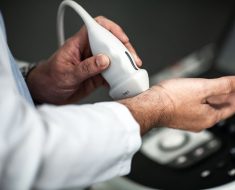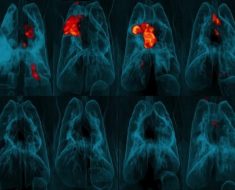The University of Rochester Medical Center has invested in an all-out enterprise imaging system that tends myriad imaging needs of clinical staff and has already proven itself critical to patient-centered care.
“We start with governance,” said James Forrester, director of cardiovascular and imaging informatics at the University of Rochester Medical Center. “Our enterprise imaging governance committee includes the COOs of our various hospitals and faculty practice, CFO, CIO, CMIO, Chief Imaging Informatics Officer, myself as Director of Imaging Informatics, as well as senior administrators and physician representation from the imaging and cardiovascular service lines.”
This governance group is chartered and charged with oversight of: 1) Medical imaging practices (new and changes to existing), 2) Imaging health IT project proposals, 3) Procurements including modalities and imaging informatics, 4) Identification and implementation of common core imaging informatics infrastructure across the enterprise, and 5) Development of appropriate enterprise policies such as information lifecycle management/image retention and image study release of information.
“To support enterprise imaging at UR Medicine, we have implemented the Hyland vendor neutral archive as our core archive for our legal image record as well as migration and DICOM routing services, the Philips PACS as our enterprise viewer, lifeIMAGE as our electronic cloud exchange platform, and Philips Intellispace Portal as our advanced visualization platform,” Forrester explained.
Supporting more platforms
The team also supports 10 additional imaging IT platforms across departments and across the enterprise. For example, UR Medicine operates a single GE system for echocardiography across the cardiovascular service line at five different hospitals and faculty practices.
So how do caregivers interact with enterprise imaging? At UR Medicine, for example, images are acquired across various departments. The three biggest traditional imaging generators are radiology, cardiovascular service and OBGYN maternal-fetal medicine. As ultrasound has become ubiquitous, however, the healthcare organization has imaging across clinical practices from that modality source.
Orders are generated from the Epic EHR; a DICOM modality worklist is required by enterprise imaging policy to ensure data integrity. Images leave the modality and hit the vendor-neutral archive DICOM routing tier, which sends simultaneously to the Philips Intellispace production environment in the primary data center as well as to the Philips Downtime system in the secondary data center.
“Both of those environments also receive dedicated HL7 feeds so that we can provide a high availability environment for imaging viewing,” Forrester said. “As soon as the first image is received, an image link is created in the Epic EHR so that providers can immediately launch the Philips Intellispace enterprise viewer. That is not a black-and-white decision, as some would favor making the images available after the read.”
Immediately available in the EHR
In a setting that supports more than six New York State-certified stroke centers, as well as the region’s level 1 trauma center, the organization feels it is necessary to make the images immediately available from the EHR even as they are still coming off the scanner. Once a study report is finalized, the images are exported to the vendor-neutral archive at the primary data center and DICOM replicated to the secondary data center.
“We use DICOM replication rather than storage replication because it allows immediate failover as high availability environment and also provides us a level of protection against ransomware and other cyberattacks that storage replication cannot provide,” he explained.
The Hyland vendor neutral archive serves as the foundation of the enterprise imaging IT core infrastructure.
“This serves as the legal image archive for the University of Rochester Medicine as well as our migration toolset for acquisitions and affiliations as well as our DICOM routing tier,” he said. “As a neutral archive, the VNA also provides significant leverage and flexibility with regard to specialty workflows as well as enterprise viewers.”
Specialty workflows
The organization enables maternal-fetal medicine to use a read-and-drop data flow in a specialty PACS to provide OBGYN with specialized tools that perinatologists use but would be of no use to a radiologist reading a diagnostic ultrasound or a cardiologist reading echocardiography images.
“This provides an autonomous and independent workflow for our specialists and subspecialists but the images are archived in our Hyland VNA where they are accessed from our Epic EHR,” Forrester explained. “Currently we average an imaging study launched from our Epic EHR every 18 seconds 24x7x365. We use the Philips Intellispace PACS enterprise viewer but could launch any viewer from Epic.”
So in addition to flexibility, the organization has leverage on contract negotiations with its viewers and specialty PACS environments: Since the enterprise imaging program began in 2014, the organization has saved more than $2.5 million in those contracts, he said.
Twitter: @SiwickiHealthIT
Email the writer: [email protected]
Source: Read Full Article





